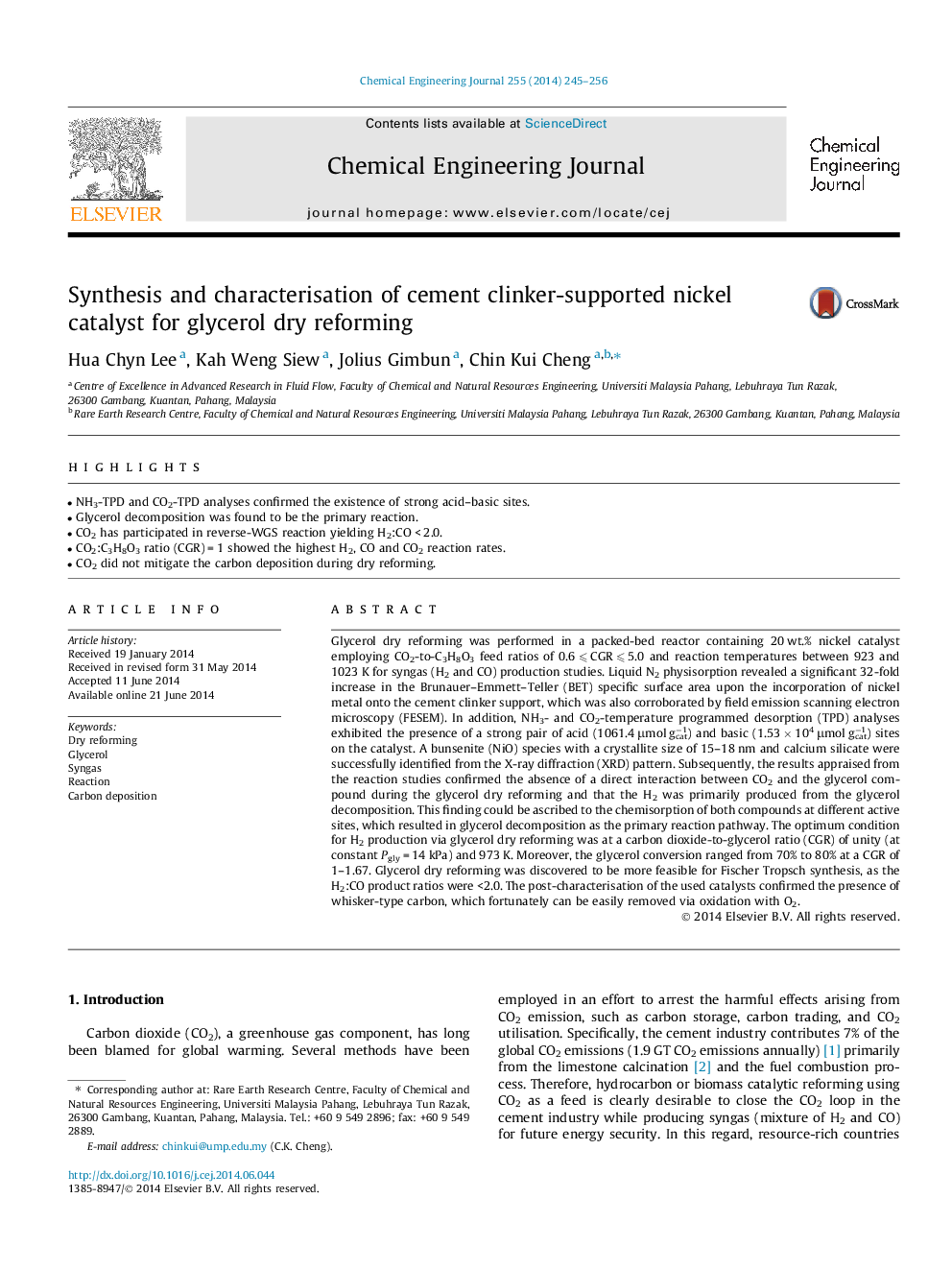| کد مقاله | کد نشریه | سال انتشار | مقاله انگلیسی | نسخه تمام متن |
|---|---|---|---|---|
| 147098 | 456385 | 2014 | 12 صفحه PDF | دانلود رایگان |
• NH3-TPD and CO2-TPD analyses confirmed the existence of strong acid–basic sites.
• Glycerol decomposition was found to be the primary reaction.
• CO2 has participated in reverse-WGS reaction yielding H2:CO < 2.0.
• CO2:C3H8O3 ratio (CGR) = 1 showed the highest H2, CO and CO2 reaction rates.
• CO2 did not mitigate the carbon deposition during dry reforming.
Glycerol dry reforming was performed in a packed-bed reactor containing 20 wt.% nickel catalyst employing CO2-to-C3H8O3 feed ratios of 0.6 ⩽ CGR ⩽ 5.0 and reaction temperatures between 923 and 1023 K for syngas (H2 and CO) production studies. Liquid N2 physisorption revealed a significant 32-fold increase in the Brunauer–Emmett–Teller (BET) specific surface area upon the incorporation of nickel metal onto the cement clinker support, which was also corroborated by field emission scanning electron microscopy (FESEM). In addition, NH3- and CO2-temperature programmed desorption (TPD) analyses exhibited the presence of a strong pair of acid (1061.4 μmol gcat−1) and basic (1.53 × 104 μmol gcat−1) sites on the catalyst. A bunsenite (NiO) species with a crystallite size of 15–18 nm and calcium silicate were successfully identified from the X-ray diffraction (XRD) pattern. Subsequently, the results appraised from the reaction studies confirmed the absence of a direct interaction between CO2 and the glycerol compound during the glycerol dry reforming and that the H2 was primarily produced from the glycerol decomposition. This finding could be ascribed to the chemisorption of both compounds at different active sites, which resulted in glycerol decomposition as the primary reaction pathway. The optimum condition for H2 production via glycerol dry reforming was at a carbon dioxide-to-glycerol ratio (CGR) of unity (at constant Pgly = 14 kPa) and 973 K. Moreover, the glycerol conversion ranged from 70% to 80% at a CGR of 1–1.67. Glycerol dry reforming was discovered to be more feasible for Fischer Tropsch synthesis, as the H2:CO product ratios were <2.0. The post-characterisation of the used catalysts confirmed the presence of whisker-type carbon, which fortunately can be easily removed via oxidation with O2.
Journal: Chemical Engineering Journal - Volume 255, 1 November 2014, Pages 245–256
